- Our Work /
- HD Health Equity
HD Health Equity
The Project ECHO team had a tight deadline to deliver an easy-to-understand document and website. Both contain an EPIS framework, standards, regulatory requirements, case examples, and resources.
This program supports health care organizations in applying quality improvement tools to improve health equity in alignment with the Joint Commission's National Patient Safety Goal 16.10.01.
The Joint Commission's standard applies to ambulatory care organizations, behavioral health care, human services organizations, critical access hospitals, and hospitals.
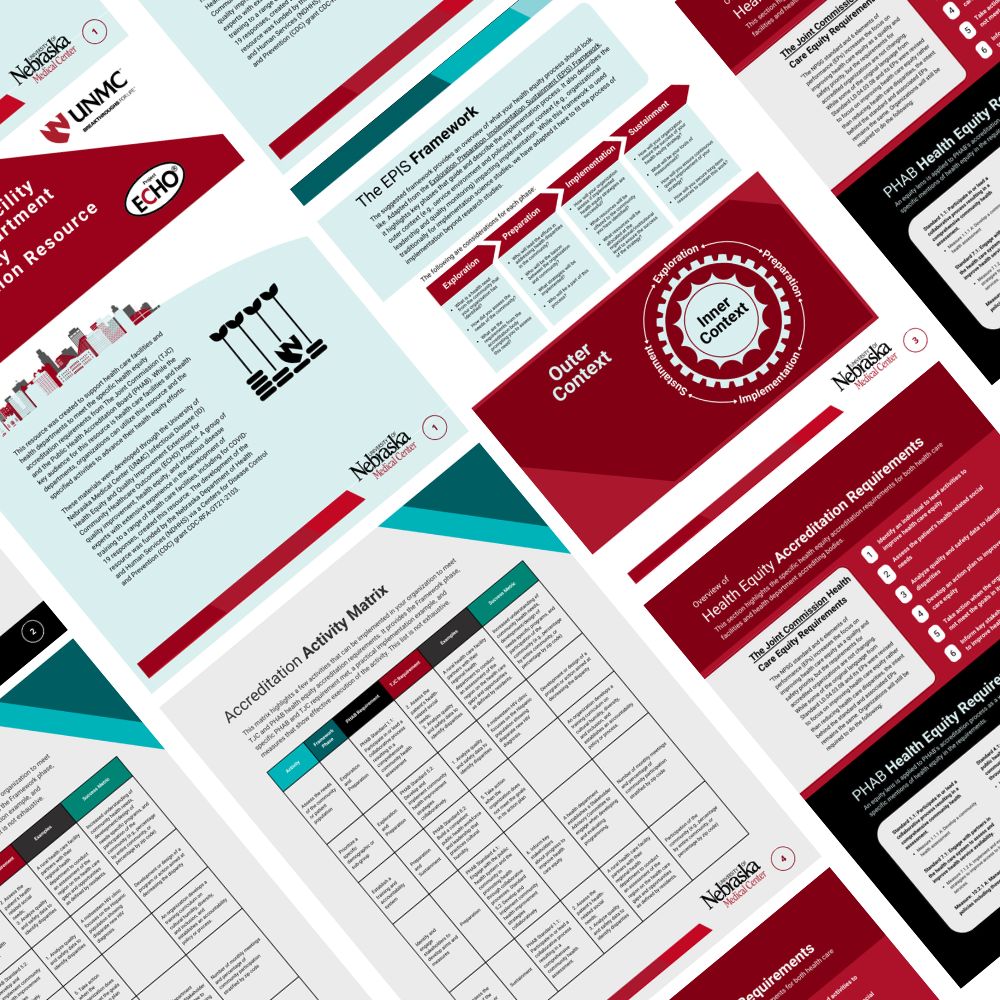
Manage a project that takes draft documents, external framework & resources, and combine it into an instructionally designed document and website.
This project required a collaboration between UNMC staff, external consultants, instructional designers, graphic artists, web developers, and key stakeholders.
The result is a static web app hosted on Azure and hard-copy documents that are distributed to the target audience.
Project Design UI/UX Image CDN Cloud Hosted Graphic Design Instructional Design
Angular Material Angular Bootstrap Azure Static Web Apps
Understanding Health Equity
Working toward the elimination of health disparities and creating opportunities for all communities to achieve their best health
What is Health Equity?
Health equity means that everyone has a fair and just opportunity to be as healthy as possible. This requires removing obstacles to health such as poverty, discrimination, and their consequences, including powerlessness and lack of access to good jobs with fair pay, quality education and housing, safe environments, and healthcare.
Unlike equality, which focuses on providing the same resources to all, equity recognizes that different people need different resources to achieve the same outcomes. Health equity work aims to address systemic barriers that have created health disparities between different populations.

Rural Healthcare Challenges
Rural communities face unique healthcare challenges that contribute to health disparities:
- Limited access to healthcare providers and specialists
- Greater travel distances to receive care
- Higher rates of uninsured or underinsured residents
- Aging healthcare infrastructure
- Social determinants including economic challenges, food insecurity, and transportation barriers
- Healthcare workforce shortages
Programs like Project ECHO help bridge these gaps by connecting rural healthcare providers with specialists through technology-enabled collaborative learning, ultimately improving health outcomes in underserved communities.
EPIS Framework for Health Equity
The Exploration, Preparation, Implementation, and Sustainment (EPIS) framework provides a structured approach to implementing health equity initiatives in diverse healthcare settings.
Exploration
Identify health disparities, assess community needs, and evaluate readiness for implementing health equity initiatives.
Preparation
Develop implementation plans, adapt interventions to local context, and build necessary partnerships and infrastructure.
Implementation
Execute health equity strategies, provide training and technical assistance, and monitor process outcomes.
Sustainment
Institutionalize practices, secure ongoing funding, and establish continuous quality improvement processes.
Scope of work
Every design journey starts off with a wireframe of all the requested features and a plan for user flow through the web app.
The Project ECHO team had a tight deadline to deliver an easy-to-understand document and website. Both contain an EPIS framework, standards, regulatory requirements, case examples, and resources. This document required instructional design, graphic design, web development and original graphics.
This final build includes a static web app.
Research
- Source Documents
- Requirements Document
- Design Documents
UX Design
- Wireframes
- Graphic Design
- Instructional Design
Prod Build
- Angular App
- Cloud Hosted
- Responsive Design
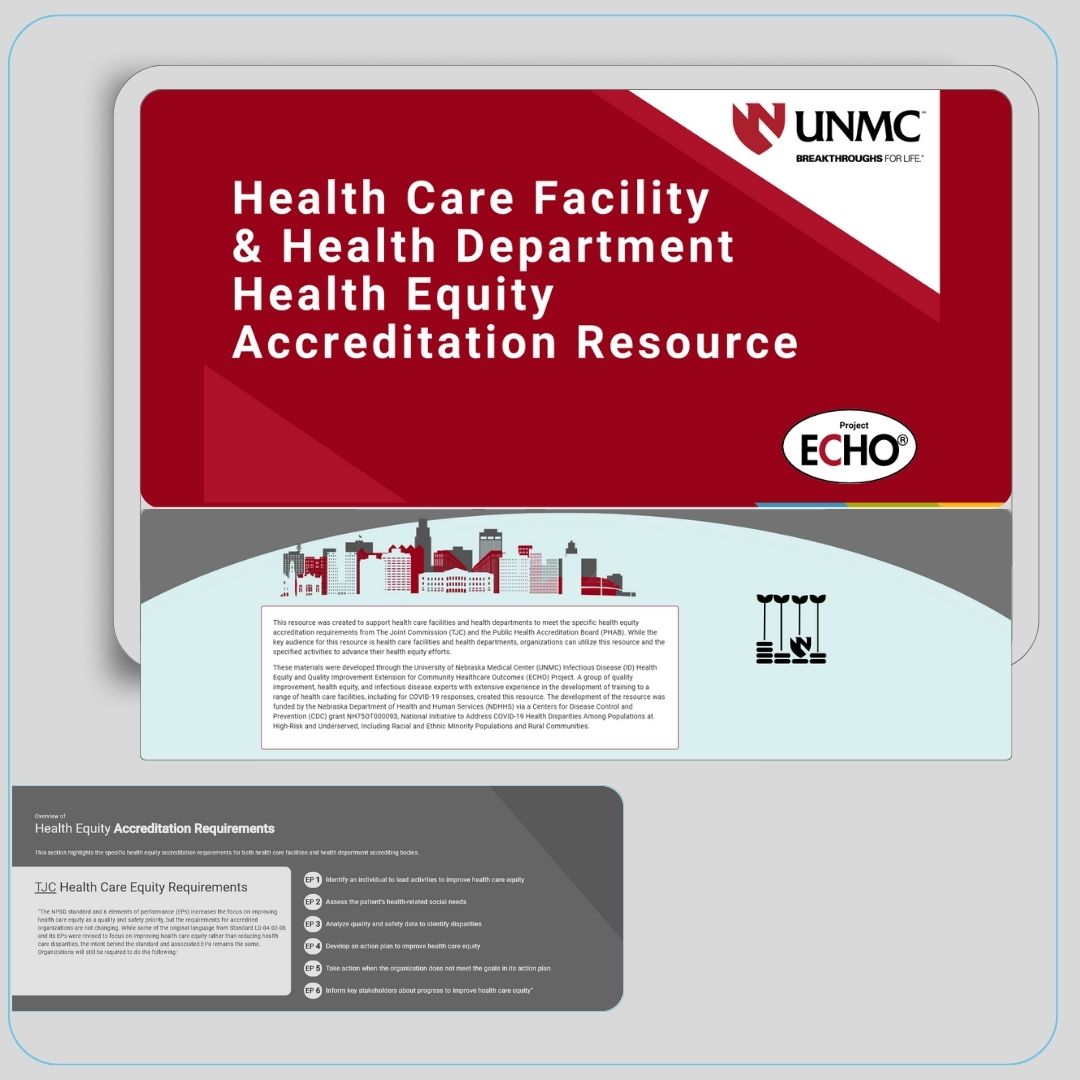
Project Deliverables
We gathered the source documents and using instructional designers and graphic artists, we created a plan for the final deliverables. The final deliverables included a static web app and hard-copy documents using the fundamental principles of instructional design.
The hard-copy PDF was a near identical version of the responsive web app. The web app was built using Angular to create a responsive design that could be viewed on any device.
Research & Source Docs
The Project ECHO team had a tight deadline to deliver an easy-to-understand document and website. Both contain an EPIS framework, standards, regulatory requirements, case examples, and resources. This document required instructional design, graphic design, web development and original graphics.
The source documents were meticulously reviewed, and a plan was created to use the content in a web app and hard-copy document.
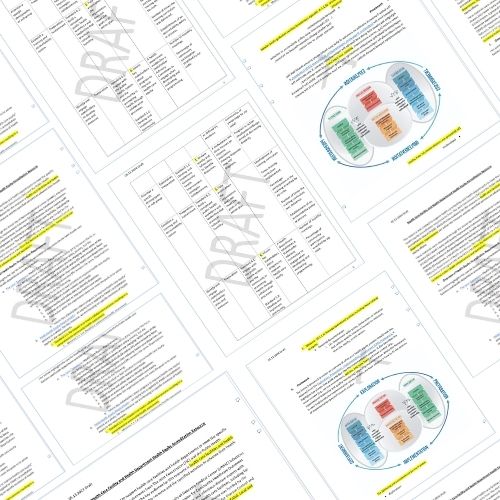
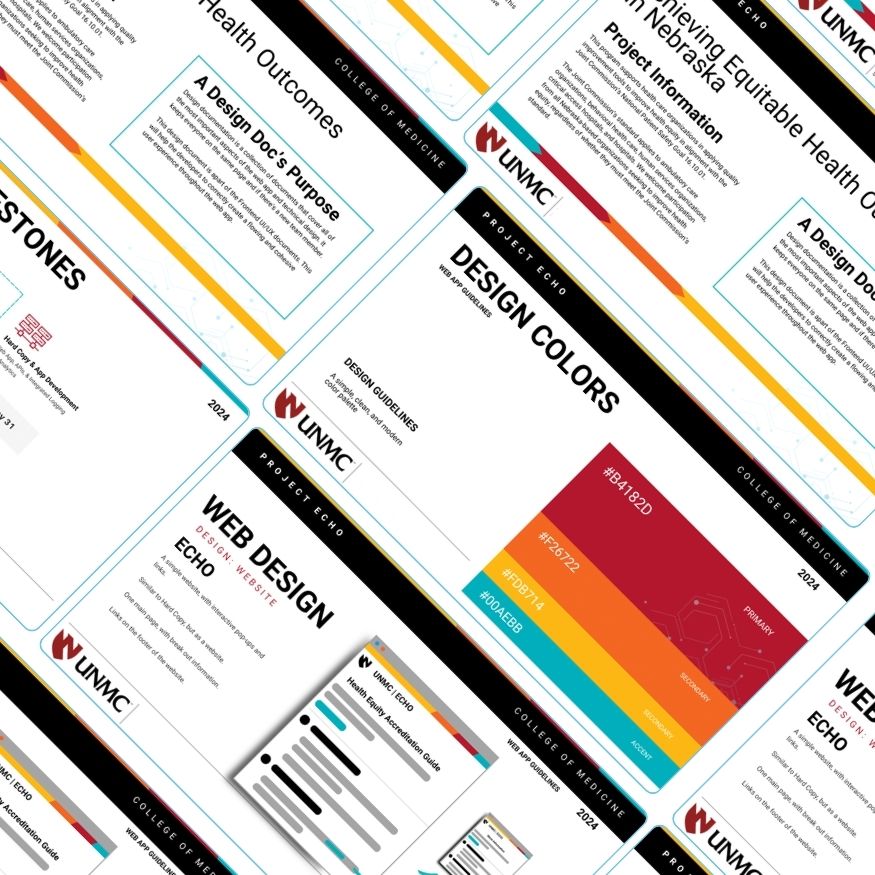
Design Documents
Every website starts with design documents followed closely by technical design documents. The design documents are used to create wireframes and a plan for the final deliverables.
Design documents are used to make sure we are delivering the right product to the client. The client is a valued partner throughout the development process, and we want to make sure we are meeting their needs and deliver a quality product that meets their expectations.
Final Result & PDF
The Project ECHO team had a tight deadline to deliver an easy-to-understand document and website. Both contain an EPIS framework, standards, regulatory requirements, case examples, and resources. This document required instructional design, graphic design, web development and original graphics.
We used Angular to build the app and Azure static web apps to host the end website. The hard-copy PDF was a near identical version of the responsive web app. The web app was built using Angular to create a responsive design that could be viewed on any device.
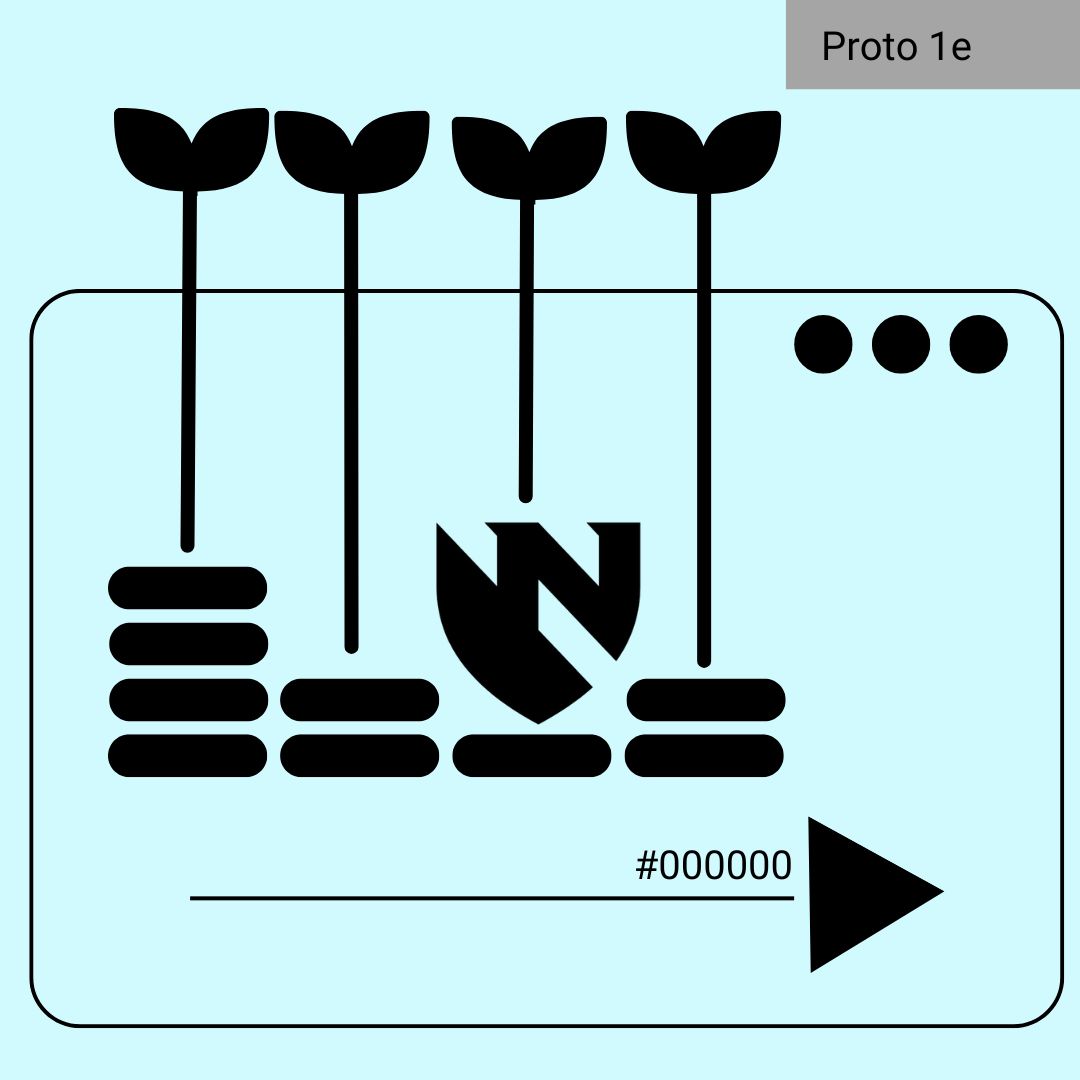

Custom Graphics
The Project ECHO team had a tight deadline to deliver an easy-to-understand document and website. Both contain an EPIS framework, standards, regulatory requirements, case examples, and resources. This document required instructional design, graphic design, web development and original graphics.
We used Angular to build the app and Azure static web apps to host the end website. The hard-copy PDF was a near identical version of the responsive web app. The web app was built using Angular to create a responsive design that could be viewed on any device.
